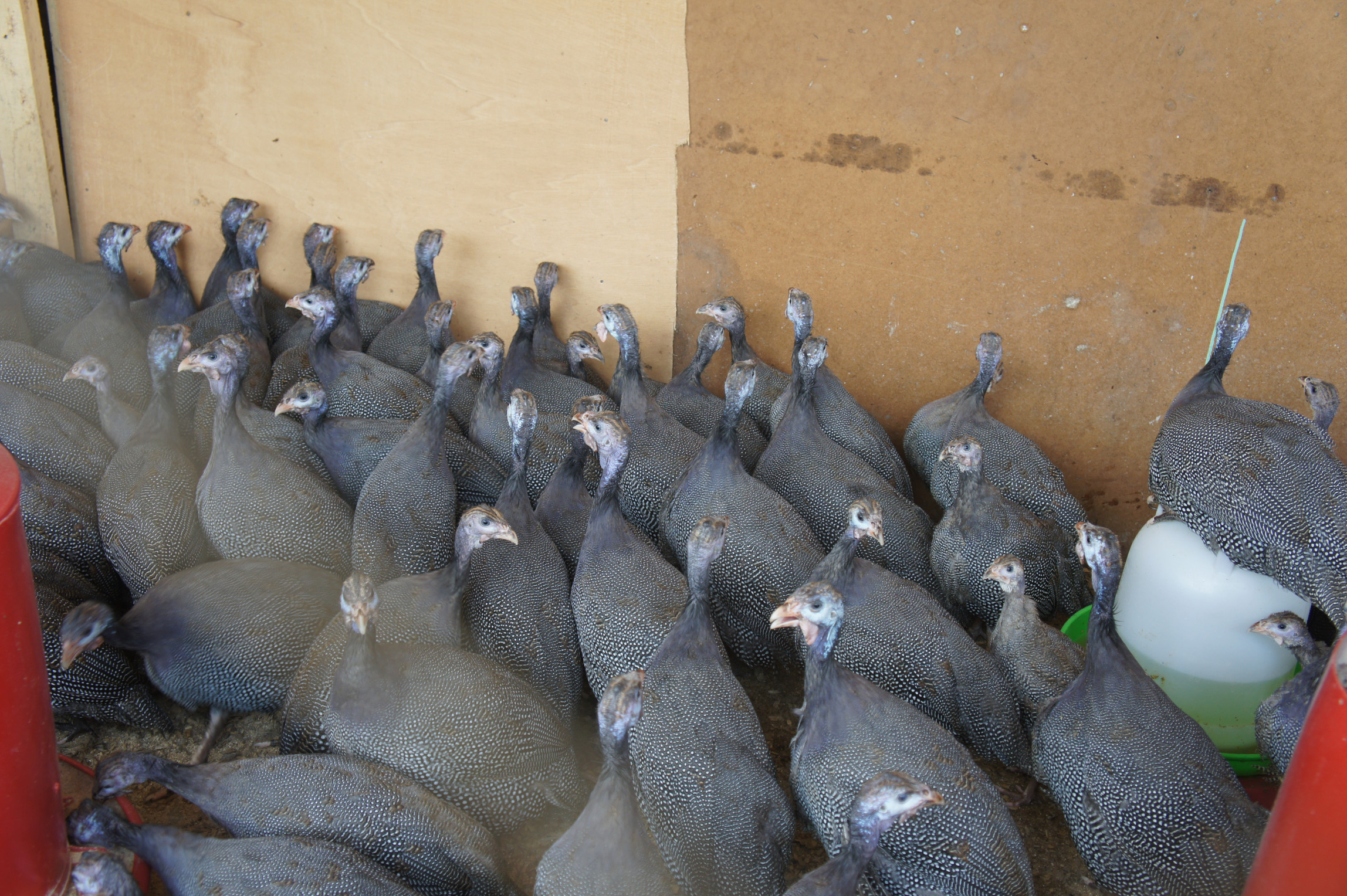 Fishmeal and crops such as soya are key protein sources for animal feeds, but they are not ecologically and economically sustainable.
Fishmeal and crops such as soya are key protein sources for animal feeds, but they are not ecologically and economically sustainable.
In West Africa, poultry producers suffer from the increasing cost of feed (representing about 70% of the total production costs), in particular protein sources. Poultry farming is also practised by almost all smallholder farmers. Their scavenging poultry is rarely provided with the necessary quantity of protein feeds, which affects meat production and eggs, and reduces family income.
Similarly, small-scale fish farmers often feed their fish on natural feed (plankton), green leaves and agricultural by-products. The nutritional value of these feeds is low, resulting in poor yields and less income for the household.
A solution to develop sustainable household poultry farming and aquaculture systems is to use untapped local, easily available and cheap protein sources. Insects, which are a natural food source of poultry and fish, are one such source, and FAO now strongly recommends the use of insects for human food and animal feed as a tool to alleviate poverty.
Partly based on findings from an EU funded project called PROteINSECT, the IFWA project focuses on the use of fly larvae and termites in three West African countries: Benin, Burkina Faso and Ghana. It started in 2015 and is due to complete its work in 2020. The project aims to develop appropriate methods for insect production based on waste material. It ensures that these innovations are safe and socially, economically and environmentally sustainable. At a later stage, we will validate and implement these innovations with farmers, and disseminate the project’s findings to stakeholders, the general public, the scientific community and policy makers.
The project is divided into eight work packages, each focusing on a particular issue:
- How to produce fly larvae most efficiently? We focus on the use of house flies and black soldier flies in smallholder systems, either produced directly by a farmer or by a micro-enterprise.
- How to collect termites most efficiently? Termites are traditionally collected and trapped to feed poultry in West Africa, but methods differ greatly and have never been accurately tested and compared.
- How to use fly rearing residues as soil amendments? Fly larvae can transform waste material into valuable compost.
- Are fly larvae and termites qualitatively suitable for poultry and fish? The project assesses the nutritional quality and acceptability of fly larvae and termites for various poultry and fish species.
- Are the proposed systems safe and environmentally sustainable? Safety is being assessed for the animal, the consumer and the producer. Environmental impact assessments will be conducted for all promoted systems.
- Are the proposed systems economically viable? Since farmers and micro-enterprises will only adopt insect feed production systems if they are economically profitable, all promoted systems are being tested for their economic viability.
- Are the proposed systems socially acceptable? From the beginning of the project, we have engaged local communities to ensure that the social context is well understood and that the novel techniques will be socially acceptable.
- How to best disseminate the technology? Various dissemination means are used to a wide range of stakeholders, from farmers to scientists and from policy makers to the general public.
